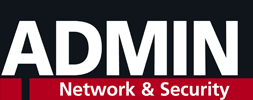Because the cloud is ubiquitous, some companies think that outsourcing their business applications to Amazon, Google, and the like is a breeze. In fact, on the way, treacherous winds blow just off the beaten track.
Docker containers are a convenient way to run almost any service, but admins need to be aware of the need to address some important security issues.
Offers for identity management as a service (IDaaS) are entering the market and promising simplicity. However, many lack functionality, adaptability, and in-depth integration with existing systems. We look at how IT managers should consider IDaaS in their strategy.
Don't equate compliance through certification with security, because compliance and security are not the same. We look at automated compliance testing with InSpec for the secure operation of enterprise IT.
Admin teams can use secret sharing to centrally manage shared access to user accounts and services. HashiCorp Vault is one of the few tools that has proven effective when it comes to implementing this solution. Here's how to use this open source tool and keep important credentials safe.
Use Yara to search your files and applications for hints of a cyberattack.
For research into deep learning algorithms that automatically acquire new skills, OpenAI operates some of the largest Kubernetes clusters worldwide, with up to 36,000 CPU cores. We look at some practical experience with the container management system.
Despite the abundance of tools that test code and help improve the effectiveness of a continuous integration pipeline, automated security testing is much more difficult to get right than it might appear.
Add extra security to your SSH service, securely copy files to and from remote computers, and configure passwordless SSH for automation scripting.
Use Microsoft SQL Server diagnostic tools to troubleshoot bottlenecks and other performance problems.











